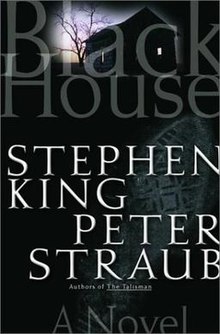
I, the Jury is the 1947 debut novel of American crime fiction writer Mickey Spillane, the first work to feature private investigator Mike Hammer.

Peter Francis Straub was an American novelist and poet. He had success with several horror and supernatural fiction novels, among them Julia (1975), Ghost Story (1979) and The Talisman (1984), the latter co-written with Stephen King. He explored the mystery genre with the Blue Rose trilogy, consisting of Koko (1988), Mystery (1990) and The Throat (1993). He fused the supernatural with crime fiction in Lost Boy, Lost Girl (2003) and the related In the Night Room (2004). For the Library of America, he edited the volume H. P. Lovecraft: Tales and the anthology American Fantastic Tales. Straub received such literary honors as the Bram Stoker Award, World Fantasy Award, and International Horror Guild Award.
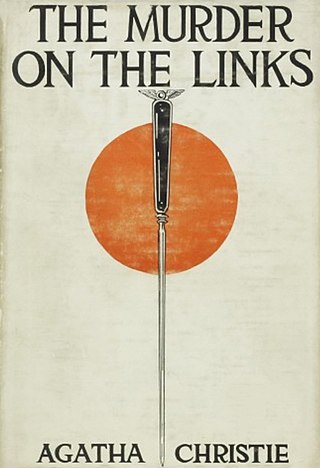
The Murder on the Links is a work of detective fiction by Agatha Christie, first published in the US by Dodd, Mead & Co in March 1923, and in the UK by The Bodley Head in May of the same year. It is the second novel featuring Hercule Poirot and Arthur Hastings. The UK edition retailed at seven shillings and sixpence (7/6), and the US edition at $1.75.
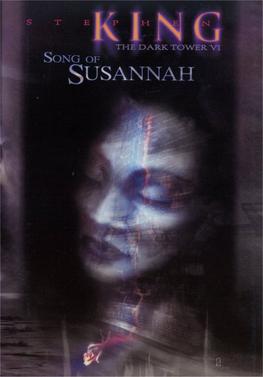
Song of Susannah is a 2004 fantasy novel by American writer Stephen King. It is the sixth book in his Dark Tower series. Its subtitle is Reproduction.
The "From Hell" letter was a letter sent with half of a preserved human kidney to George Lusk, the chairman of the Whitechapel Vigilance Committee, in October 1888. The author of this letter claimed to be the unidentified serial killer known as Jack the Ripper, who had murdered and mutilated at least four women in the Whitechapel and Spitalfields districts of London in the two months prior to Lusk receiving this letter, and whose vigilance committee Lusk led in civilian efforts to assist the police in identifying and apprehending the perpetrator.
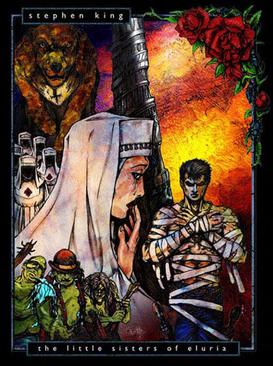
The Little Sisters of Eluria is a fantasy novella by American writer Stephen King. It was originally published in 1998 in the anthology Legends. In 2002, it was included in King's collection Everything's Eventual. In 2009, it was published together with the revised edition of The Dark Tower: The Gunslinger by Grant in a limited edition of 4,000 numbered copies of the Artist Edition signed by illustrator Michael Whelan and 1,250 numbered copies of the Deluxe Edition signed by Whelan and Stephen King. Both editions contain Whelan's additional new illustrations for The Gunslinger.
"Strawberry Spring" is a horror short story by Stephen King. It was originally published in the Fall 1968 issue of Ubris magazine, then republished in the November 1975 issue of Cavalier magazine, and, heavily revised, collected in King's Night Shift in 1978.
Donald M. Grant, Publisher, Inc. is a fantasy and science fiction small press publisher in New Hampshire that was founded in 1964. It is notable for publishing fantasy and horror novels with lavish illustrations, most notably Stephen King's The Dark Tower series and the King/Peter Straub novel The Talisman.

The Talisman is a 1984 fantasy novel by American writers Stephen King and Peter Straub. The plot is not related to that of Walter Scott's 1825 novel of the same name, although there is one oblique reference to "a Sir Walter Scott novel." The Talisman was nominated for the Locus and World Fantasy Awards in 1985. King and Straub followed up with a sequel, Black House (2001), that picks up with a now-adult Jack as a retired Los Angeles homicide detective trying to solve a series of murders in the small town of French Landing, Wisconsin.
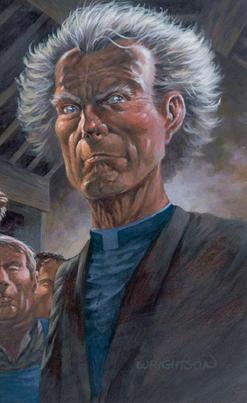
Father Donald Frank Callahan is a fictional character created by Stephen King. He originally appeared in the 1975 novel 'Salem's Lot and later The Dark Tower, appearing in The Dark Tower V: Wolves of the Calla, The Dark Tower VI: Song of Susannah and finally The Dark Tower. He is at first an alcoholic with a troubled faith, but he seems to find his peace in The Dark Tower novels, and his faith is restored.

Koko is a horror-mystery novel by American writer Peter Straub, first published in the United States in 1988 by EP Dutton, and in Great Britain by Viking. It was the winner of the World Fantasy Award for Best Novel in 1989.
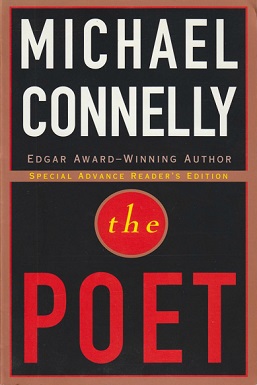
The Poet is the fifth novel by American author Michael Connelly. Published in 1996, it is the first of Connelly's novels not to feature Detective Harry Bosch and first to feature Crime Reporter Jack McEvoy. A sequel, The Narrows, was published in 2004. The Poet won the 1997 Dilys Award.

If You Could See Me Now is a horror novel by American author Peter Straub. It is his third novel and his second work of gothic or supernatural fiction. The book was published by Jonathan Cape in June 1977 – the same London publisher who published Julia in 1976. Coward, McCann & Geoghegan published an American edition also in June 1977.

The Goulston Street graffito was a sentence written on a wall beside a clue in the 1888 Whitechapel murders investigation. It has been transcribed as variations on the sentence "The Juwes are the men that will not be blamed for nothing". The meaning of the graffito, and its possible connection to the crimes attributed to Jack the Ripper, have been debated for over a century.

George Albert Godley was a police officer of the Metropolitan Police who was involved in the hunt for Jack the Ripper in 1888.
"Seeing Red" is the tenth episode of the first season of the American television drama series Dexter, which first aired on December 3, 2006 on Showtime in the United States. The episode was written by Kevin R. Maynard and was directed by Michael Cuesta. In the episode, the Miami Metro Homicide Department team investigate a blood-soaked crime scene, where blood spatter analyst Dexter Morgan is confronted by a repressed memory of a traumatic incident from his childhood. Meanwhile, Dexter's girlfriend Rita Bennett is charged with assaulting her ex-husband Paul Bennett and risks losing custody of their children, while Det. Angel Batista investigates a hunch that the Ice Truck Killer has an amputee fetish.

Edward Wayne Edwards was an American serial killer and former fugitive. Edwards escaped from jail in Akron, Ohio, in 1955 and fled across the country, holding up gas stations. By 1961, he was on the FBI's Ten Most Wanted Fugitives list.
